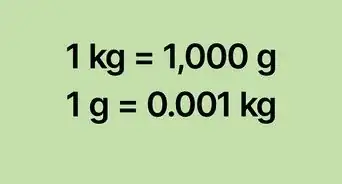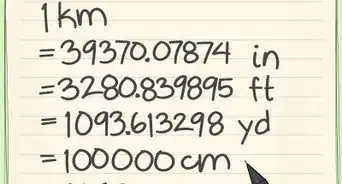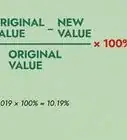This article was co-authored by wikiHow Staff. Our trained team of editors and researchers validate articles for accuracy and comprehensiveness. wikiHow's Content Management Team carefully monitors the work from our editorial staff to ensure that each article is backed by trusted research and meets our high quality standards.
This article has been viewed 47,760 times.
Learn more...
An improper fraction is a fraction with a larger numerator than denominator. You can convert an improper fraction to a percent the same way that you would convert any fraction to a percent. The simplest way is to divide the numerator by the denominator, then multiply by 100. It is important to keep in mind, however, that since an improper fraction denotes a number greater than 1 whole, it also denotes a percentage greater than 100%.
Steps
Converting to a Decimal
-
1Use a calculator to divide the numerator by the denominator. The numerator is the top number, and the denominator is the bottom number. It is best to use a calculator, because depending on the fraction, you might end up with a number that has many decimal places. Completing this calculation converts the fraction to a decimal.
- Note that, because you have an improper fraction, the denominator will divide into the numerator at least 1 whole time. That means that your decimal will be greater than 1. It also means that your percent will be greater than 100%.
- For example, if you are converting , you would calculate .
-
2Multiply the decimal by 100. You can do this with a calculator, but an easy way to do this in your head is to simply move the decimal point two places to the right.[1]
- For example, .
Advertisement -
3Add a percent sign. Until you add a percent sign, your number still reads like a decimal, even though it no longer is. So, add your percent sign to avoid confusion. The percent sign comes after the number.
- For example, .
Multiplying by 100
-
1Multiply the fraction by 100. To multiply a fraction by 100, multiply the numerator by 100. Keep the same denominator.[2] You can also think of multiplying the fraction by . Note that , so . It doesn’t matter if you multiply by the whole number or the fraction, since they mean the same thing.
- For example:
- For example:
-
2Divide the numerator by the denominator. The numerator is the top number, the denominator is the bottom number. You will likely need a calculator to do this, or you can do it manually.
- For example, .
-
3Add a percent sign. The percent sign goes after the number, and helps avoid confusion. Remember that a percent is not the same thing as a decimal or whole number, so you need to denote a percent with the appropriate sign.
- For example,
Finding an Equivalent Fraction
-
1Understand what a percent looks like as a fraction. Since a percent is equal to a certain number of hundredths, you are going to convert the fraction to an equivalent one with 100 in the denominator.
- For example, if you have , you want to find in the equation .
-
2Divide 100 by the denominator of the fraction. Remember that the denominator is the bottom number. This calculation will give you a factor of change telling you how much bigger 100 is than the denominator. Note that this method only works if the denominator divides evenly into 100.
- For example, if you are converting , you would calculate . So, a denominator of 100 is 20 times bigger than a denominator of 5.
-
3Multiply the numerator and denominator by the factor of change. To maintain an equivalent fraction, whatever you do to the original denominator, you must also do to the numerator. [3]
- For example, .
-
4State the fraction as a percent. Remember that a percent is simply a number out of 100, or hundredths. Since your fraction is now shown as , the numerator of your fraction is now the percent. Note that, since you are working with an improper fraction, your numerator is larger than your denominator. This means that your fraction represents more than 100 percent.
- Don’t forget to include the percent sign after the number.
- For example,
Community Q&A
-
QuestionHow do I convert a percentage to a decimal?
 DonaganTop AnswererDrop the percent sign and divide the percentage by 100. Do this by moving the decimal point two places to the left.
DonaganTop AnswererDrop the percent sign and divide the percentage by 100. Do this by moving the decimal point two places to the left. -
QuestionHow do I adjust for a percentage greater than 100%, e.g. 113%?
 DonaganTop AnswererThe conversion is the same as with percentages less than 100%: move the decimal point two places to the left. 113% equals 1.13, or 1 13/100.
DonaganTop AnswererThe conversion is the same as with percentages less than 100%: move the decimal point two places to the left. 113% equals 1.13, or 1 13/100.
References
- ↑ https://www.mathsisfun.com/converting-fractions-percents.html
- ↑ https://www.khanacademy.org/math/cc-eighth-grade-math/cc-8th-numbers-operations/cc-8th-repeating-decimals/a/writing-repeating-decimals-as-fractions-review
- ↑ https://www.virtualnerd.com/middle-math/ratios-proportions-percent/percents/fraction-to-percent-conversion
About This Article
To convert an improper fraction to percent, start by dividing the numerator by the denominator. Then, multiply the decimal you get by 100. Finally, add a percent sign to the end of your answer. You can also multiply the improper fraction by 100 and then divide the numerator by the denominator. Then, add a percent sign and you're done! If you want to find the percentage by using an equivalent fraction, keep reading!














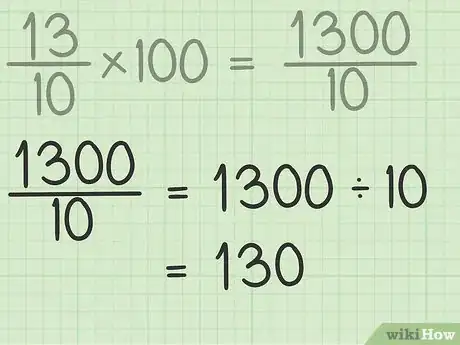

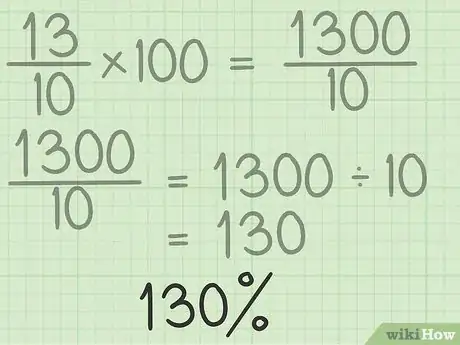

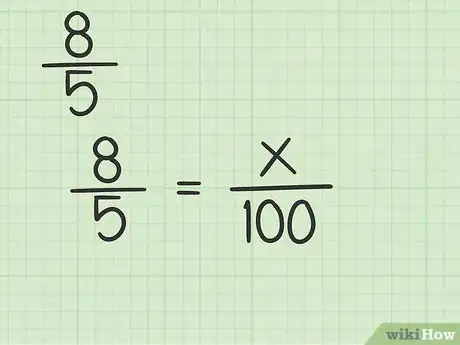



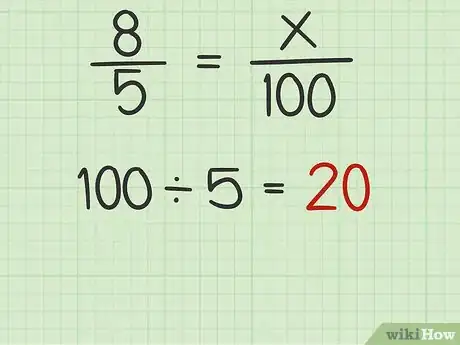

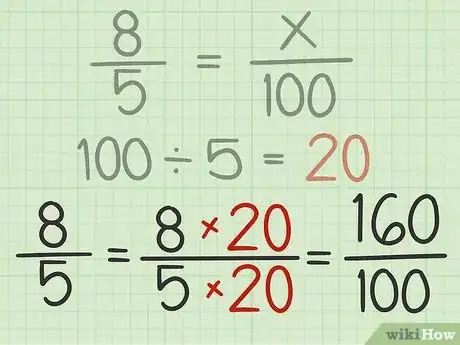





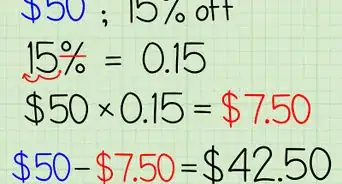
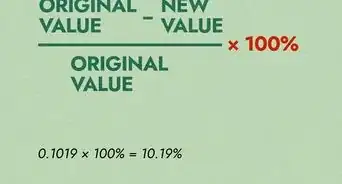

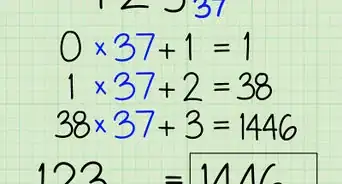
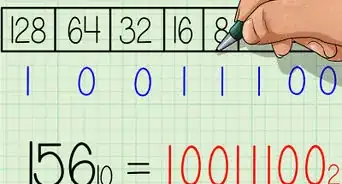
-to-Grams-(g)-Step-8-Version-5.webp)
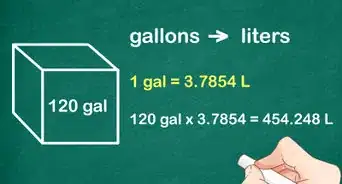
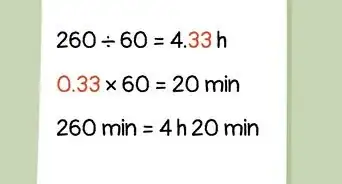
-to-Fahrenheit-(°F)-Step-6-Version-2.webp)
